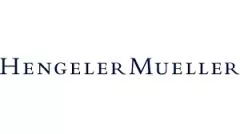- with readers working within the Banking & Credit industries
Following the ECJ's landmark judgment in Illumina/GRAIL, the Commission's "secret weapon" to catch below the threshold mergers, Article 22 referrals, is off the table, at least in its original version. Consequently, the Commission and many Member States are currently assessing the feasibility of implementing "callin rights" while (also) considering the potential conflict with legal certainty as an important principle of EU and national law. This clash has already become imminent in the Nvidia/ Run:ai case, where the Italian NCA has made use of its callin right to refer the belowthreshold merger to the Commission, resulting in the parties to the transaction lodging an appeal with the General Court (despite the transaction having been cleared). Overall, which instrument is best suited to resolve the issue remains unclear. It appears that the Commission and many Member States have numerous New Year's resolutions in this regard. So, let's see what is on their list and who might be ready for a call to the Commission...
A good Start: The (Re)Discovery of the Importance of Quantitative Thresholds
In 2024, in the context of the never-ending saga of Illumina/GRAIL, the ECJ finally issued a landmark decision on Article 22, putting an end to the Commission's referral policy for below the threshold mergers.
There, the ECJ found that Member States can only refer transactions to the Commission if they had jurisdiction under their own national law. The legal objective of Article 22 was to enable merger control in Member States without national regimes and not, however, to serve as a "corrective mechanism" for all potentially harmful mergers. The ECJ also reminded readers of the function of turnover thresholds as "guarantees of foreseeability and legal certainty" and highlighted the "cardinal importance" for corporations to quickly assess whether their transactions are subject to merger control and which authority (if any) is responsible for merger control review.
A Hasty Turn: Killer Acquisitions' Shadow
As the debate continues how the Commission will most likely address transaction that fall through the crack, keeping an eye on killer acquisitions, one question takes center stage: Are call-in powers the "miracle weapon" to solve the problem that the ECJ's Illumina/ GRAIL ruling created for the Commission and NCAs?
Following the ECJ's ruling, the Commission is likely to pursue measures to address socalled "killer acquisitions" – acquisitions of an innovative target to terminate development of the target's innovations to pre-empt future competition. Teresa Ribera's mission letter calls for her to adjust the regulatory framework to cover all potential killer acquisitions. The political guidelines for the Commission 2024-2029 also point out the necessity of supporting small corporations whose size and financing capacity cannot be compared to large corporations, making them potential targets of killer acquisitions. Potential actions could include modifying merger control thresholds in the EUMR or giving the Commission more powers to review below-threshold mergers. Nevertheless, amendments to the EUMR are time-consuming, politically controversial and it is, as some say, unclear whether amendments will ever be adopted. In the meantime, the Commission can still rely on the established referral mechanism of Article 22, coupled with hope that Member States will provide broader intervention powers in national law to allow for such a referral under Illumina/GRAIL.
A New Scenery: So Call Me Maybe?
Some Member States have already made the Commission's wishes come true – including Italy, Sweden, Ireland, Latvia, Slovenia, Lithuania, Hungary, and, most recently, Denmark – by implementing mechanisms to allow review of transactions that do not meet the thresholds under national law: so-called "call-in rights". Others may follow: France is considering implementing call-in rights as well and started a public consultation recently, asking for potential tools to addressing below-threshold mergers, while Germany and Belgium are most likely not to change their current frameworks. For Member States that have implemented new call-in rights, the requirements and circumstances that potentially trigger these rights differ significantly and demonstrate that these national legislations are incoherent.
- Quantitative vs. qualitative thresholds: While several Member States (e.g., Italy, Denmark, Hungary, and Sweden) require quantitative thresholds, others, such as Latvia and Slovenia, rely on the parties' market shares, where market definition is key and might involve a high degree of uncertainty. Thresholds differ significantly: In Latvia, for instance, a cumulative market share of 40% is sufficient (although there must also be an initial suspicion that competition is being affected), while in Slovenia a combined market share of 60% is required. Ireland does not require any additional criteria. It is sufficient that the transaction may potentially affect domestic competition. A similarly broad discretion is found in Lithuania, where the call-in power applies if the transaction is likely to create or strengthen a dominant position or significantly reduce competition in a relevant market in Lithuania. Cyprus follows a similar approach for mergers of "major importance", where such a classification requires a decision by the Minister of Energy, Trade and Industry, and the National Competition Authority cannot act before such an executive decision has been taken.
- Reporting of the transaction: Some Member States allow companies to voluntarily report to gain legal certainty, while others provide for a legal obligation for companies to report the transaction.
- Time limits: Not all Member States set a specific time limit for calling a deal in and, if they do, time limits vary. For example, Denmark's call-in right is tied to the expiration of no more than 6 months from knowledge of the potential or completed merger, while other Member States focus on the transaction completion date. Several Member States have set a specific time limit (e.g., Lithuania, Latvia, Italy) ranging from 6 to 12 months, while others, such as Slovenia, do not provide for a statutory time limit.
The New Math: Call-in + Referral = Brussels?
The recently introduced call-in powers are currently undergoing rigorous testing. For instance, Italy recently used its power to initiate a review process in the Nvidia/Run:ai merger and immediately referred the case to the Commission under Article 22, the first time after the Illumina/GRAIL judgement that the Commission has used Article 22 after a NCA had exercised its call-in power. The transaction did not meet the EUMR's or Italy's national turnover thresholds due to Run:ai's negligible revenues. The Commission received the referral in October 2024 and the transaction was officially notified the following November, while subsequently being unconditionally cleared in December 2024. Although the Commission may have intended to emphasize that the new call-in rights, when used in conjunction with Article 22, do not result in more stringent scrutiny, Nvidia remained dissatisfied with the outcome. As a result, Nvidia filed an appeal with the General Court, challenging the Commission's acceptance of the referral in October 2024. The controversial saga of Article 22 and call-in rights is not over yet – the show must go on.
The benefits of European harmonization are thus being partially reversed. In the event of transactions impacting competition within the internal market that do not trigger the turnover thresholds of the EUMR, the Commission may once again issue a referral request under Article 22(5) to the Member State(s) whose national thresholds apply. Such a referral after an NCA has exercised its call-in power may be legally permissible, as the CMA had requested or joined an Article 22 referral from another Member State in several cases prior to Brexit, although the system was always voluntary in the UK. No legal objections have been raised to this practice, and the ECJ had indicated in Illumina/GRAIL that referral requests under Article 22 do not require national rules making the concentration subject to a notification obligation, referring to the legal situation in the UK at the time.
For now, the Commission will ask the NCAs to call her maybe...
Goal for 2025: Getting Back on Track
So far, so good, but how does this fit in with Commission President von der Leyen's goal of making speed, coherence, and simplification key policy priorities in everything the Commission does, while Andreas Mundt, the head of Germany's Federal Cartel Office, emphasizes the need to avoid legal uncertainty and lack of predictability in merger control? The current call-in powers are far from perfect. From the (or should we say, some) regulators' point of view, they are useful to catch killer acquisitions or other transactions where necessary. However, is the risk to legal certainty and predictability worth it? And are there alternatives that may achieve the same goal, while respecting the ECJ's call for foreseeable and certain merger control thresholds? If not (or even if there are), how can the law be "fixed" to achieve a (bare) minimum of legal certainty? Some thoughts:
- A reform of the EUMR, strengthening the one-stop-shop principle, could provide legal certainty. Perhaps a transaction value threshold might be the savior to provide both legal certainty and a possible in depth-review of potential killer acquisitions. At EU level, the threshold would have to be set higher than in Germany or Austria to avoid bringing too many cases to the Commission that do not warrant merger control review. In addition to the transaction value threshold, the formulation of a complementary criterion that establishes a sufficient "local nexus" to the internal market is of crucial importance. For cases not covered by an EU transaction value threshold, Article 22 could still be invoked. Article 14 DMA may have a bolstering effect, especially in the digital sector. It obliges designated gatekeepers to inform the Commission of all their mergers and acquisitions, which would otherwise fly under the Commission's radar, and provides the Commission with the possibility to request from Member States a referral to the Commission under Article 22. Gatekeepers, who tend to acquire tech start-ups, are therefore under particular scrutiny!
- If there is no solution at the EU level, Member States that have introduced call-in rights should at least clarify the intervention threshold both in quantitative and qualitative terms to ensure legal certainty and predictability. The uncertainty of whether and, if multiple jurisdictions are involved, which authority will declare itself competent, can act as an obstacle to planning and launching mergers (even if pro-competitive). To address this issue, an absolute lower limit could be introduced regarding a transaction value threshold and/or the turnover of the involved companies. In addition, possible intervention could be limited to certain high-risk sectors such as the digital economy or pharmaceuticals, which are susceptible to killer acquisitions, or, in turn, certain sectors typically not raising competition concerns (such as real estate) could be excluded from possible intervention (opt-out solution) or be subject to revenue multipliers.
What should be clear is that call-in rights giving Member States wide discretion as to whether exercising them, could run counter to the ECJ's requirements in Illumina/GRAIL. It is of paramount importance that the principle of legal certainty be given primary character. The abundance of national call-in rights, which all have differing requirements and time limits, is problematic. Companies must – if they want certainty – navigate various rules and approach a large number of NCAs. This is precisely what the ECJ criticized as untenable in Illumina/GRAIL. It will be interesting to see whether and how the European courts resolve this area of conflict in Nvidia/Run:ai ...
What's next?
In conclusion, the debate around Article 22 and the subsequent focus on call-in powers of Member States demonstrates that this remains a hot topic for 2025. While the ECJ has curtailed the Commission's expansive interpretation of Article 22, NCAs are expected to identify new methods to address potential anti-competitive mergers, and parties to M&A transactions must remain vigilant to referral risks. Companies should therefore evaluate the likelihood of a referral from Member States, particularly those with call-in powers, and consider voluntary notifications or engage with authorities to manage uncertainty. In the coming months, there is a possibility that call-in rights will be used with increasing frequency. The ultimate solution that the Commission will propose is yet to be seen, as it is still in the process of resolving the issues that arose last year. New Year, but same old problems...
The content of this article is intended to provide a general guide to the subject matter. Specialist advice should be sought about your specific circumstances.




